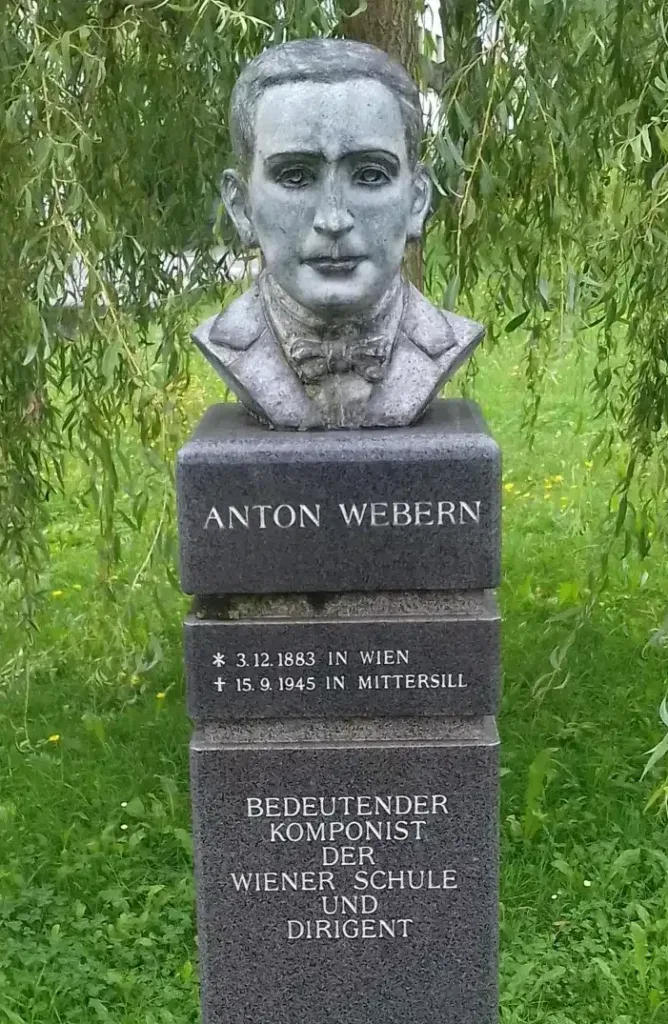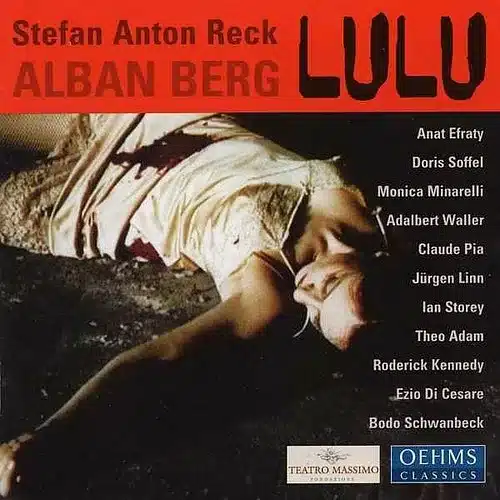At the heart of the musical revolution that defined the beginning of the 20th century, two brilliant minds emerged as the bearers of a new sound era. Alban Berg (1885 – 1935) and Anton Webern (1883 – 1945), favorite disciples of pioneer Arnold Schoenberg, orchestrated a symphonic metamorphosis that echoed on history’s grand stage.
Diving deep into the abyss of dissonance and exploration, these composers sculpted soundscapes that defied convention and broke the boundaries of traditional harmony. While delicately weaving intricate melodies and bold structures, Berg and Webern etched their names along with their mentor in the annals of musical ingenuity.
Entering the realm of Berg and Webern is like embarking on an auditory odyssey, where every note is a brushstroke on the canvas of innovation. Paying homage to Schoenberg’s revolutionary atonality while infusing their unique artistic talents, these masters have created compositions that transcend simple sounds, delving into the raw emotions and turbulent landscapes of an ever-changing world.
As social upheavals echoed in the corridors of time, Berg and Webern stood as pillars of musical evolution, harnessing the power of discordance to create harmonies that spoke volumes without saying a word. Join us on a melodic journey through the intricate tapestries of Berg, Webern, and Schoenberg’s enduring musical legacy – a symphony of innovation, passion, and unbridled creativity.
Early influences: tracing the roots of Berg and Webern
Before delving into the revolutionary compositions of Alban Berg and Anton Webern, it is essential to understand the early influences that shaped their musical paths. Both composers were deeply influenced by their mentor, Arnold Schoenberg, who was a pioneer in the realm of atonality. Schoenberg’s revolutionary ideas and musical manifesto laid the foundation for Berg and Webern’s artistic activities.
Berg, born in Vienna in 1885, was exposed to a rich musical environment from an early age. He studied composition under Schoenberg and soon became fascinated by his mentor’s innovative techniques. Similarly, Webern, born in Austria in 1883, was attracted to Schoenberg’s radical ideas and enrolled as one of his first students.
Under Schoenberg’s guidance, Berg and Webern embraced the concept of atonality, a departure from traditional tonal harmony. This rejection of tonality allowed them to explore new realms of expression and challenge established norms. As they embarked on their artistic journeys, they carried the seeds planted by their revered mentor.

Schoenberg’s Musical Manifesto: Atonality Unleashed
Schoenberg’s revolutionary musical manifesto unleashed a wave of atonality reverberating throughout the music world. His rejection of tonal centers and embrace of dissonance paved the way for composers such as Berg and Webern to push the boundaries further.
Atonality is a departure from traditional tonal harmony. It frees composers from adhering to rigid chord progressions or pitch armature rules. Instead, it allows the exploration of dissonant intervals and unconventional harmonies.
Schoenberg believed that atonality was the natural progression of music, reflecting the complexities and dissonances of the modern world. This radical departure from tradition opened up a world of possibilities for Berg and Webern, who enthusiastically embraced their mentor’s vision.
A symphony of dissonances: analysis of Berg’s soundscapes
Their intricate soundscapes and emotional force characterize Alban Berg’s compositions. His exploration of dissonance and complex harmonies created a symphony of contrasting elements that captivated the audience.
In his seminal work, “Wozzeck,” Berg delves into the depths of human emotions through dissonant musical language. The play tells the tragic story of a soldier driven to madness by social pressures and personal turmoil. Through his use of dissonance, Berg effectively conveys the protagonist’s inner turmoil and psychological struggles.
Berg’s mastery lies in his ability to balance moments of tension with moments of resolution. He weaves intricate melodies and harmonies together, creating a tapestry that reflects the complexities of human existence. His compositions are not simply collections of notes but emotional journeys that transport listeners to deep depths.
Webern’s miniature masterpieces: exploring musical microcosms
Anton Webern, however, took a different approach to composition. Their brevity and concise structure often characterize his works. Webern made miniature masterpieces that explored musical microcosms.
In pieces such as “Five Pieces for Orchestra,” Webern distills musical ideas into their purest form. Each note has immense weight and meaning within these compact compositions. By eliminating excess, Webern invites listeners into intimate musical worlds where every sound is meticulously placed.
Webern’s compositions may be small, but they have a powerful impact. He creates moments of profound beauty and intensity through his precise and economical approach. Every note is carefully chosen, creating a sense of musical purity that resonates with listeners.
The dodecaphonic technique: the unique contributions of Berg and Webern
One of the most significant contributions of both Berg and Webern to the world of music is their development and exploration of the twelve-tone technique. This compositional method, also known as serialism, revolutionized musical composition.
The twelve-tone technique involves organizing all twelve pitches of the chromatic scale in a specific order called the tone row. This row becomes the basis of the composition, with each height used before any repetition occurs.
Berg’s masterpiece “Violin Concerto” shows his mastery of this technique. The piece is structured around a tonal row that undergoes various transformations throughout its duration. The result is a complex but cohesive composition showcasing Berg’s innovative music approach.
Webern also embraced the twelve-tone technique in his compositions to explore new sonic territories. His work “Symphony Op. 21” exemplifies his meticulous approach to serialism, with each movement built on carefully crafted tone rows.

Legacy of innovation: the influence of Berg and Webern on modern music
The impact of Alban Berg and Anton Webern on modern music cannot be overstated. Their revolutionary ideas and innovative approaches continue to shape contemporary compositions.
Many composers have been inspired by Berg’s exploration of dissonance and emotional depth. His influence can be heard in the works of composers such as Benjamin Britten, Dmitri Shostakovich, and György Ligeti.
Webern’s concise structures and attention to musical purity also left an indelible mark on the musical landscape. His influence can be heard in the works of composers such as Pierre Boulez, Karlheinz Stockhausen, and Luigi Nono.
Berg and Webern’s legacy lives on through the countless composers inspired by their revolutionary ideas. Their contributions to music continue to transcend boundaries and defy convention, ensuring their influence will last for generations.
Evolution of expressionism: Berg, Webern and the emotional power of music
Expressionism, a movement that sought to convey raw emotions and inner turmoil through art, found its musical counterpart in the works of Berg and Webern. Both composers embraced this aesthetic, using dissonances and unconventional harmonies to evoke intense emotional responses.
Berg’s opera “Lulu” is an excellent example of expressionist music. The story follows the tragic life of the main character, whose fate is sealed by social constraints. Through dissonance and complex harmonies, Berg captures Lulu’s emotional journey with uncanny precision, all the way to her murder by Jack The Ripper.
Webern’s compositions also embody the spirit of expressionism. His focus on concise structures allows for concentrated emotional impact. Pieces such as “Six Pieces for Orchestra” evoke a sense of unease and introspection, reflecting the inner turmoil often associated with expressionist art.
Breaking boundaries: revolutionary structures in musical compositions
Berg and Webern were not content to cross harmonic boundaries but challenged traditional structural conventions in their compositions.
In his opera “Wozzeck,” Berg breaks free from traditional operatic structures by employing a series of compact scenes rather than a continuous narrative flow. This fragmented structure reflects Wozzeck’s fractured psyche and adds another layer of complexity to the narrative.
Webern’s compositions also show innovative structural approaches. His work “Variations for Orchestra” moves away from traditional symphonic forms, presenting a series of concise variations on a single theme instead. This departure from convention allows for a more focused exploration of musical ideas.
Lasting impact: the musical legacy of Berg, Webern, and Schoenberg
The musical legacy of Alban Berg, Anton Webern, and Arnold Schoenberg continues to resonate with both audiences and composers. Their revolutionary ideas and innovative approaches have left an indelible mark on the music world.
Berg and Webern expanded the possibilities of what music could be through their exploration of dissonance, atonality, and unconventional structures. Their works continue to inspire composers to push boundaries and challenge established norms.
Schoenberg’s influence as a mentor cannot be overstated. His revolutionary ideas laid the foundation for Berg and Webern’s musical journeys, shaping their artistic visions and guiding them into new sonic territories.
Conclusion: the resonant sound waves of the musical legacy of Berg, Webern, and Schoenberg
The resonant sound waves made by Alban Berg, Anton Webern, and Arnold Schoenberg continue reverberating through music history’s corridors. Their contributions to atonality, expressionism, structural innovation, and dodecaphonic technique changed the course of music forever.
As we explore their compositions today, we are reminded of their unwavering commitment to pushing boundaries and defying convention. The legacy they left behind inspires future generations of musicians seeking to chart their own course in the ever-evolving world of music.
If you like this post, you can always donate to support my activity! One coffee is enough!

